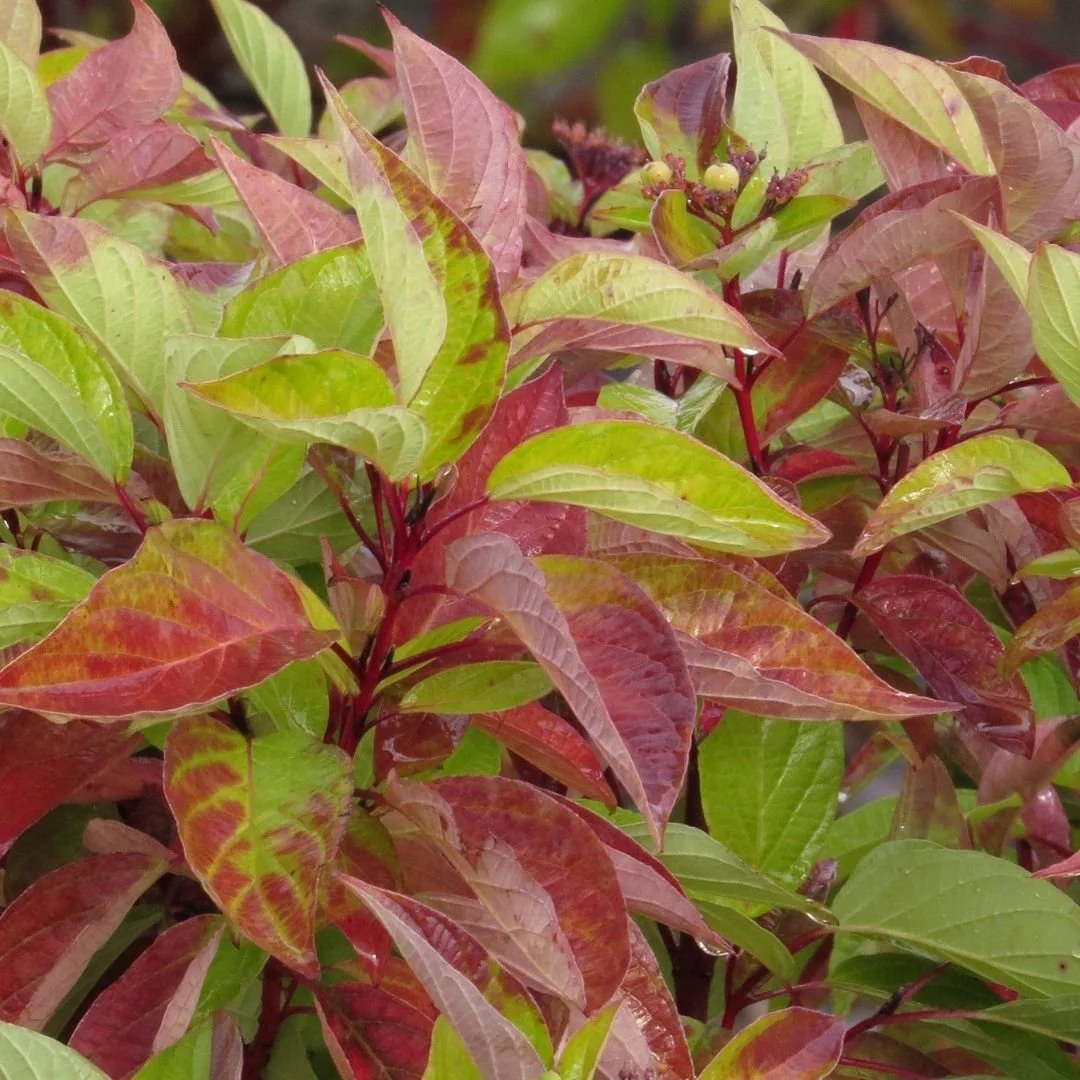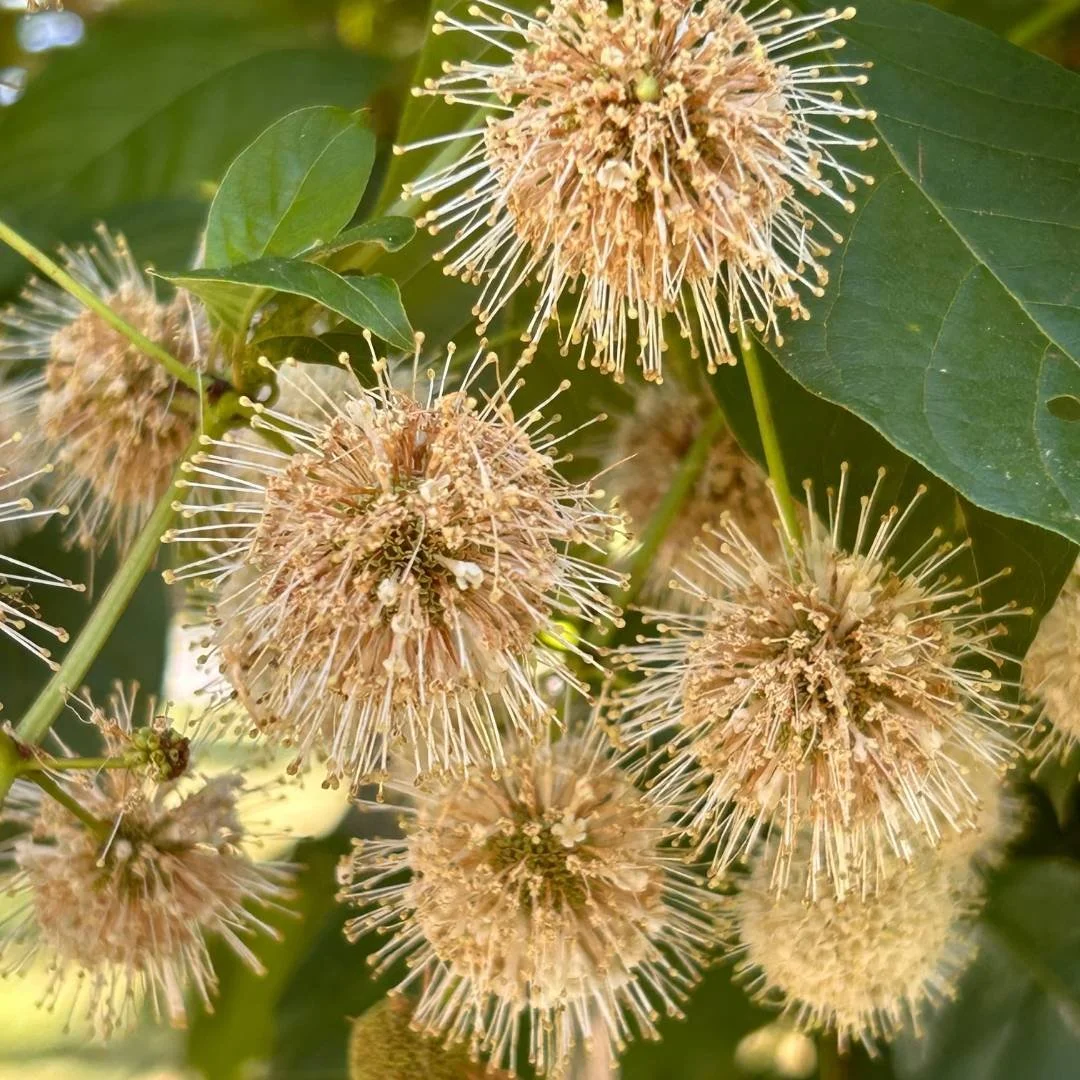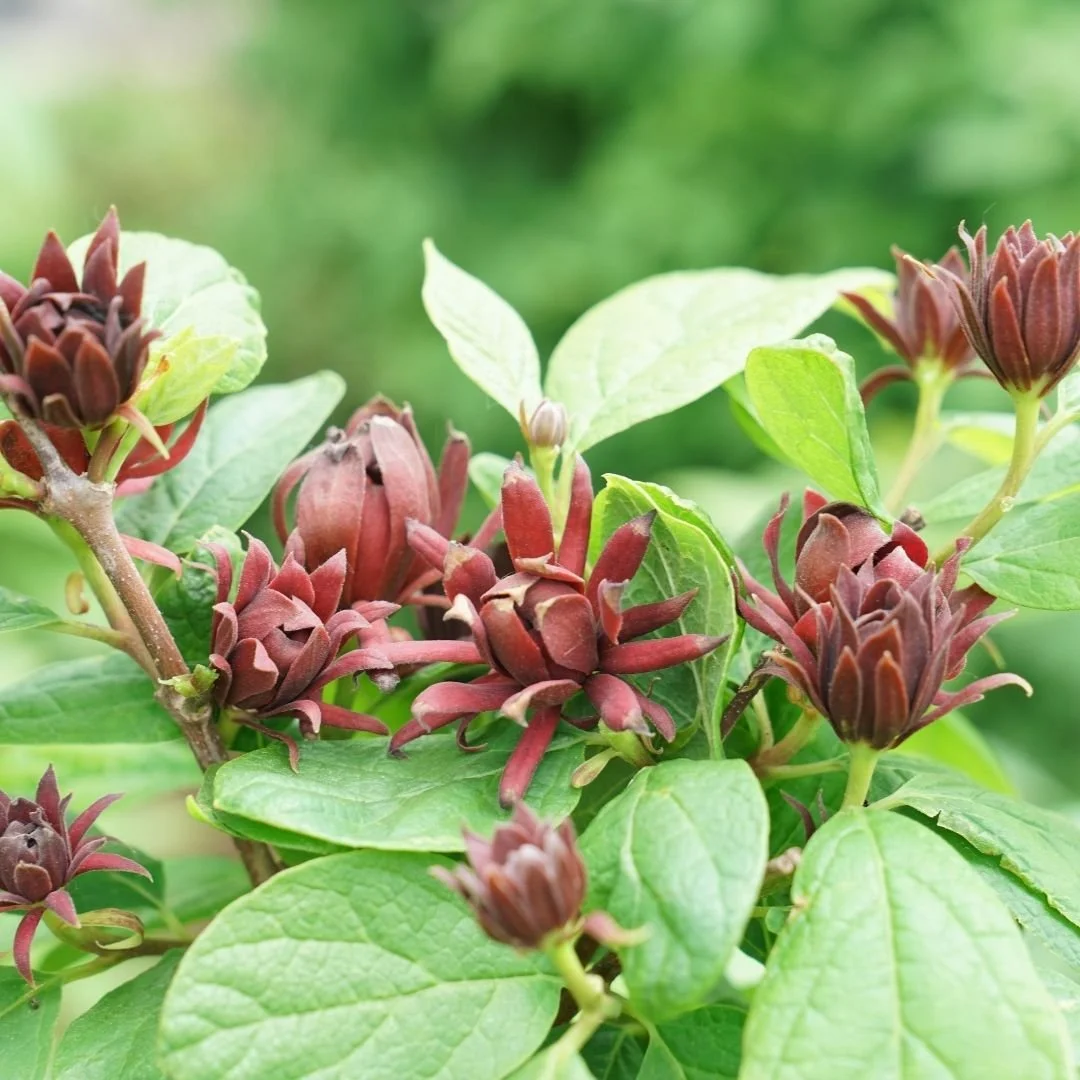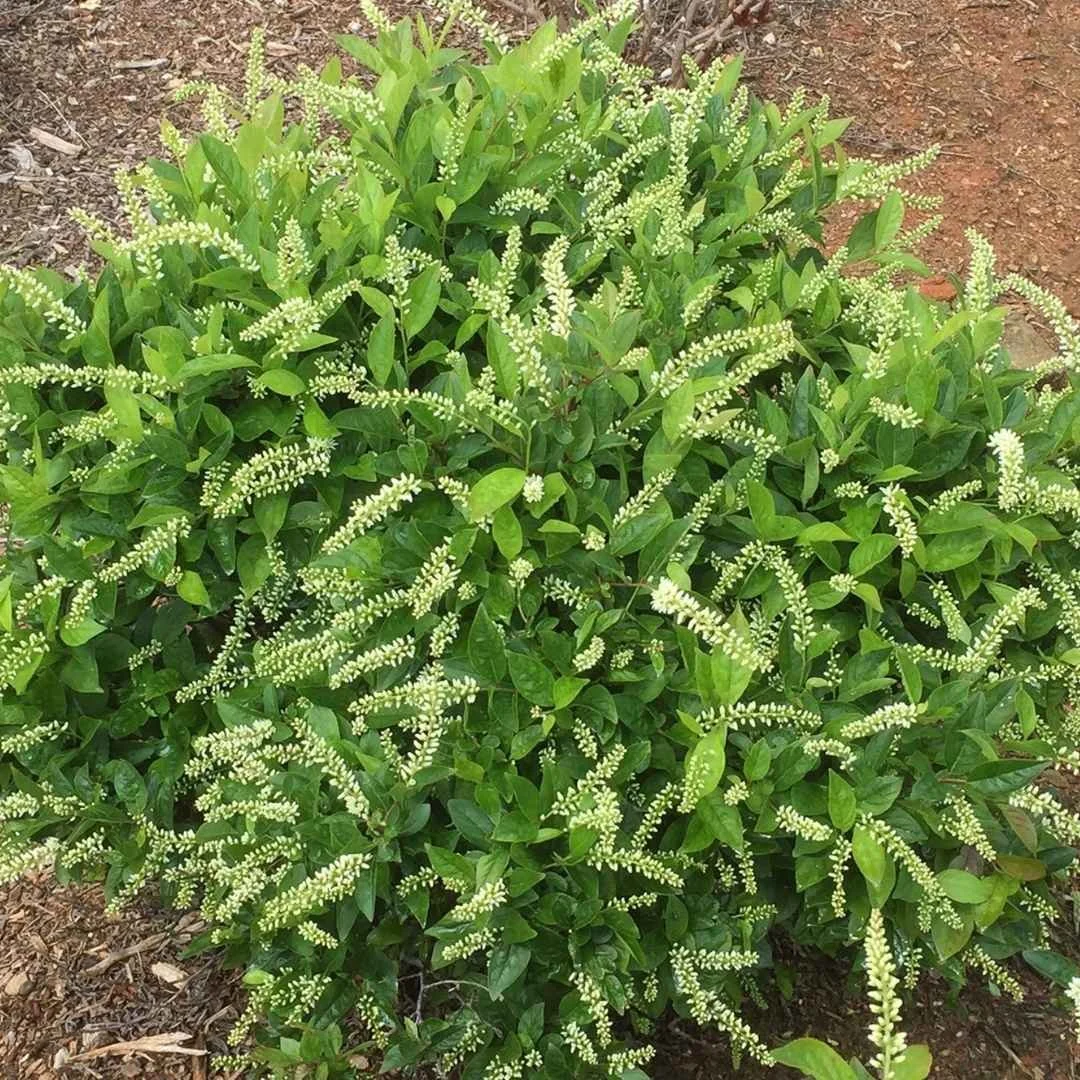Soak Up Water with These 10 Wet Soil Loving Shrubs
Looking for plants to grow in the damp areas of your yard? Try one of these wet soil loving shrubs!
Does your yard have soggy soil and low wet spots where water pools after a big rain? Or perhaps you struggle with a damp, mossy side yard, or wonder what to put at the bottom of a downspout. These wet garden spots can be challenging and seem like a gardening nightmare!
Luckily, with the right plants, these tricky areas can be transformed into a vibrant and flourishing landscape. There are several different wet soil shrubs that not only survive but thrive in these damp conditions while bringing flowers, fall color, and beauty to the garden.
Many plants don't like standing water and soggy dirt, but these water-loving shrubs will survive and thrive in damp conditions - some can even grow in standing water! By choosing the right wet soil bushes, you can transform problematic wet spots into attractive and beautiful parts of the landscape. Wet soil shrubs also perform an important function by acting like a sponge, absorbing water and helping to manage those troublesome wet areas of the garden.
These shrubs have higher watering needs than many other garden plants. Depending on how saturated the soil is, they may require supplemental watering for a few weeks after planting to help with root establishment, as well as during times of severe heat and drought. When choosing your wet soil bushes, take into account your USDA gardening zone and ensure the plant's light requirements align with the conditions of the planting area.
Different plants have different needs, and ensuring you match the right plant to the right spot will set you up for long-term gardening success. If you are planning on creating a mass planting, use this handy calculator to help you determine the number of plants needed. Keep reading to discover 10 amazing wet soil shrubs that will turn your soggy soil into a garden oasis!
Summersweet
Clethra alnifolia
Zones: 3-9
Light: Full sun to full shade
Ruby Spice Summersweet Clethra happily soaks up water in the landscape.
Summersweet is an upright, deciduous shrub native to the swampy areas and marshes of the Eastern United States. It is an extremely versatile plant, with the ability to grow and flower in both full sun and full shade. In the summer, fragrant panicle-shaped flowers cover the plant, attracting loads of pollinators and brightening up even the darkest corners of the yard.
If you want a plant that likes wet soil and shade, summersweet is exactly what you are looking for! It happily grows in wet, boggy conditions and can even tolerate standing water. Summersweet has a suckering habit and is useful for controlling erosion on damp slopes. If you are wondering what to put at the bottom of a downspout, summersweet is a great choice, and it’s also an ideal plant for a rain garden or bioswale.
There are many different sizes of summersweet to choose from. The straight species* is a large plant with white flowers, growing up to 10 feet tall and 6 feet wide over time. For smaller space gardens, the white-flowering ‘Hummingbird’, Sugartina® ‘Crystallina’, and Summer Sparkler™ varieties grow 2-4 feet tall, making them ideal for planting in wet soil near foundations and at the bottom of downspouts. Ruby Spice’ has bright pink flowers and grows 3-5 feet tall and wide.
2. Inkberry Holly
Ilex glabra
Zones: 5-9
Light: Full sun to partial shade
Squeeze Box® Inkberry Holly is an evergreen wet soil shrub. Photo courtesy of Proven Winners, provenwinners.com
If you are looking for a wet soil evergreen to soak up the water in your garden, an inkberry holly is the perfect choice. This slow-growing evergreen shrub is native to the moist, wet coastal plains of the Eastern and South-central United States. Inkberry hollies boast glossy, dark green leaves and dainty white spring flowers that are irresistible to bees. They prefer moist to wet soil in full sun to partial shade, and can even tolerate periods of standing water.
Inkberry hollies are dioecious, meaning they have separate male and female plants. Female inkberry plants will produce dark blue berry-like fruits when pollinated by nearby male plants. To ensure berry production, it's essential to plant both male and female inkberries together. And as an added bonus, Inkberry hollies are seldom severely damaged by deer.
If you need a wet soil evergreen and decide to plant an inkberry holly, the cultivars offer fuller growth when compared to the straight species*, which tends to develop a leggy, open habit. There is an inkberry holly sized for every garden: ‘Densa’ is large, growing 4-7 feet tall and wide; ‘Shamrock’ and Nordic™ are midsize; Gem Box® and Strongbox® are small; and Squeeze Box® retains a tall, narrow, pyramidal shape.
3. Red Twig Dogwood
Cornus sericea
Zones: 2-7
Light: Full sun to partial shade
The First Editions® Firedance™ Dogwood is a wet soil shrub that turns bright red in fall. Image courtesy of Bailey Nurseries
Red twig dogwood is a stunning deciduous shrub known for its vibrant red stems that stand out beautifully against winter's snowy backdrop. This adaptable plant thrives in a variety of soil conditions but truly excels in wet soil. It is native to the swamps and wetland margins of North America, and has a spreading, suckering habit which is useful for stopping soil erosion in wet areas. It likes full sun to partial shade and is seldom severely damaged by deer, making it a great wet soil bush for those with deer browsing in their yards!
In spring, the red twig dogwood bursts into life with lush green leaves and clusters of white flowers, soon followed by white and light blue berries. As autumn arrives, the foliage turns dazzling shades of orange and red. The show doesn’t stop in winter, when vibrant red stems stand out in the landscape. Red twig dogwood is a remarkable four-season wet soil flowering shrub, bringing year round beauty to the garden.
There many different red twig dogwood varieties available to choose from. The straight species* is a large and suckering plant, growing up to 10 feet tall and wide, and is a great choice for wet, boggy native gardens and pollinator gardens, since it hosts several different species of caterpillars. ‘Baileyi’ is a popular 6-10 foot tall variety that does not have the suckering, spreading habit of the straight species; Firedance™ grows 3-4 feet tall and has a uniform, compact shape and reddish purple fall color; ‘Flaviramea’ has yellow twigs and grows 6-8 feet tall and wide.
4. Buttonbush
Cephalanthus occidentalis
Zones: 5-9
Light: Full sun to partial shade
Buttonbush is a wet soil shrub for native gardens, and a butterfly favorite.
Buttonbush is a fascinating native shrub known for its unique white spherical flower clusters that bloom in summer, attracting a variety of bees, butterflies and hummingbirds. This adaptable plant thrives in wet spots and can even tolerate standing water, making it an ideal shrub for rain gardens, pond edges, and soggy low areas where other shrubs might falter. It’s a unique, wet soil flowering plant.
Buttonbush is native to the swamps and wet boggy areas of North America, and has glossy green leaves and a multi-stemmed, irregular to rounded shape. It requires consistently moist, wet, rich soil in full sun to partial shade - flowering diminishes significantly in shade and dry soils. Buttonbush can be grown directly in shallow water at the edge of a pond or water garden, and it’s a great plant for the rain garden. If you have an extremely wet, swampy area of your yard that receives full sun to partial shade, buttonbush is the plant you have been searching for!
There are several varieties of buttonbush available, each offering unique sizes and features to suit both large and small yards. The straight species* is quite large, growing 5-12 feet tall and 4-8 feet wide, and can resemble a small tree upon maturity. Sugar Shack® is a great choice for smaller gardens, staying a compact 4-5 feet tall and wide. The Fiber Optics® cultivar stays under 6 feet tall and wide, and ‘Crimson Comet’ is a larger plant with red seed pods and outstanding fall color.
5. Winterberry Holly
Ilex verticillata
Zones: 3-9
Light: Full sun to partial shade
The Berry Heavy® Winterberry Holly is a wet soil shrub with winter interest. Photo courtesy of Proven Winners, provenwinners.com
Winterberry holly is a deciduous holly shrub known for its striking display of bright red berries that persist well into winter. Native to Central and Eastern North America, winterberry holly thrives in wetlands, along stream banks, and in other moist environments. It is an exceptional wet soil shrub for gardens with low spots, rain gardens, or any area prone to flooding. Winterberry holly is quite versatile and grows in full sun to partial shade.
In spring, winterberry holly leafs out with fresh green foliage. As the seasons progress, the plant produces bright red berries that mature in the fall. These vibrant berries persist on the plant even after it loses its leaves in autumn, adding a bright pop of color to the stark winter landscape while providing a valuable food source for the birds.
Winterberry holly is dioecious, with both male and female plants required in order for female plants to produce berries (a ratio of 1 male plant for every 5 female plants is recommended). And according to Rutgers University, winterberry hollies are seldom severely damaged by deer.
The straight species* of Winterberry holly is seldom sold commercially, in favor of the numerous excellent cultivars with more abundant fruit. ‘Winter Red’ grows 6-8 feet tall and wide and is a heavy berry producer (pollinate with ‘Southern Gentleman’ or ‘Apollo’); Berry Poppins® is a good choice for smaller gardens and stays a compact 3-4 feet tall and wide (pollinate with Mr. Poppins®). ‘Berry Heavy’ and ‘Red Sprite’ have prolific berry production (pollinate with ‘Jim Dandy’).
6. Black Chokeberry
Aronia melanocarpa
Zones: 3-8
Light: Full sun to partial shade
Low Scape Mound® Aronia is easy to grow and will soak up the excess water in your landscape. Photo courtesy of Proven Winners, provenwinners.com
Black chokeberry is an adaptable deciduous shrub known for its ability to thrive in a variety of soil types and moisture levels. It has glossy dark green leaves and clusters of small white flowers in spring that give way to vibrant black berries, a late summer food source for song birds and other small mammals. The fall color is outstanding, with leaves turning brilliant shades of red and purple.
Black chokeberry is native to the eastern North America where it grows in wet thickets, moist woodlands, swamps and boggy areas. It grows best in full sun to partial shade and prefers moist or wet soils, though once established it can handle short periods of drought. Black chokeberry will tolerate occasional flooding but should not be grown in standing water.
There are several varieties of Black chokeberry available, differing in size and shape. The straight species* is a large, suckering plant that will colonize an entire area, and is the perfect wet soil bush for naturalizing in a larger landscape. Ground Hug® stays under 14 inches tall and is useful for creating a moisture-loving ground cover.
Low Scape Mound® is a compact 2 foot tall and wide plant, great for planting at the bottom of a down spout, using in a foundation planting, or for lawn replacement. Low Scape Hedger®, as the name suggests, is great for creating hedges and screening, and grows up to 5 feet tall with a 2-3 foot spread. ‘Autumn Magic’ grows 4-6 feet tall and wide and has dramatic fall color, and ‘Viking’ is a 3-6 foot tall and wide selection with prolific berries, great for massing, rain gardens and erosion control.
7. Ninebark
Physocarpus opulifolius
Zones: 2-8
Light: Full sun to partial shade
Diabolo® Ninebark is a large, sprawling shrub that will soak up lots of water in the landscape.
Ninebark is a large deciduous shrub native to Eastern and Central North America, where it grows wild in moist thickets and alongside streams and rocky banks. It has four seasons of interest - spring flowers, colorful foliage in summer and fall, and peeling bark to liven up the winter landscape.
Ninebark can adapt to both wet soils and periods of drought, making it a fantastic plant for a rain garden or any site that fluctuates between very dry and very wet. It transplants easily and is not fussy about soil composition, happily thriving away in both acid and alkaline soils. Ninebark tolerates short-term standing water, but is not a good candidate for growing directly in shallow water (choose a button bush instead).
The straight species* of Ninebark is a coarse, sprawling shrub and is infrequently sold at garden centers, in favor of the more refined cultivars that vary in size, shape and color. Diabolo® is a popular selection, growing 8-10 feet tall with deep purple green foliage and pinkish white flowers. Amber Jubiliee™ and Ginger Wine® have amazing fall color, Tiny Wine® and Little Devil™ are better for smaller yards, and Fireside® has a rounded shape and deep purple to red foliage.
8. White Fringetree
Chionanthus virginicus
Zones: 4-9
Light: Full sun to partial shade
White Fringetree is a large shrub or small tree that loves moisture.
The white fringetree is known across the Eastern United States by various different names - Grancy Greybeard, Old Man’s Beard, and American fringetree. No one seems to agree on the name, but we can all agree that white fringetree is a stunning native plant! It has a lovely rounded spreading shape, waxy dark green leaves, and fragrant fringe-like white flowers covering the plant from late spring through early summer. In fall, the leaves turn a clear shade of yellow before falling off to reveal attractive furrowed brown bark.
White fringetree is a sizable multi-stemmed shrub or single-trunked small tree. It grows wild along the stream banks and moist woodlands of the Eastern United States, and is happiest in moist, well-draining soil with good drainage - be sure to avoid planting in areas where water tends to accumulate. White fringetree is dioecious, with separate male and female plants. Female trees will produce dark blue berry-like fruits when planted near a male. Fringetrees bloom heaviest when planted in full sun, and they make a great specimen planting for damp side yards and moist woodland edges.
The straight species* of the white fringetree is beautiful, reliable, and worth seeking out. It makes a wonderful addition to any native garden that has consistently damp, well-draining soil. Plant one in a low, wet area of a pollinator garden, where it can create a focal point while also serving as a butterfly host plant. A few cultivars are available commercially: ‘Emerald Knight’ is a male selection and maintains an upright, pyramidal shape; and Prodigy® has darker green leaves and a rounded shape. Read more about the White Fringetree here.
9. Carolina Allspice(Sweetshrub)
Calycanthus floridus
Zones: 4-9
Light: Full sun to partial shade
Simply Scentsational® Sweetshrub has fragrant flowers and loves to soak up water in the landscape. Photo courtesy of Proven Winners, provenwinners.com.
Carolina allspice, also known as sweetshrub, is a deciduous shrub with fragrant flowers, leaves, stems and bark. The reddish-brown flowers bloom from mid to late spring and occasionally into the summer, making it a delightfully fragrant choice for those looking for a wet soil flowering plant. Carolina allspice is native to the southeastern United States and thrives in wet and poorly drained soils, in full sun to partial shade.
Plant Carolina allspice in rain gardens, along stream banks, around ponds, and in other low-lying areas. Its tolerance for wet conditions makes it an ideal choice for areas prone to periodic flooding or poor drainage. Carolina allspice does not tolerate dry soil and will require supplemental watering during times of heat and drought.
The straight species* of Carolina allspice grows 6-9 feet tall and wide and is suitable for creating a deciduous hedge or filling up a partly shaded, damp corner of the yard. There are several cultivars on the market, including: Simply Scentsational®, a prolific bloomer with heavily scented flowers; ‘Burgundy Spice’, a gorgeous 8 foot shrub with deep maroon foliage; and ‘Athens’, an unusual green-flowering introduction from Dr. Michael Dirr.
10. Virginia Sweetspire
Itea virginica
Zones: 5-9
Light: Full sun to full shade
Love Child® Virginia Sweetspire is a low-maintenance, trouble free wet soil shrub. Photo courtesy of Bailey Nurseries
If you are looking for a wet soil-loving plant with stunning flowers and brilliant fall color, try Virginia sweetspire. From late spring through early summer, cascading racemes of fragrant white flowers cover the arching branches of this elegant deciduous shrub, resembling bursts of fireworks. In autumn, the leaves turn brilliant shades of red, orange, and purple. Virginia sweetspire is native to the southeastern United States and is highly adaptable to a range of soil conditions, including wet and poorly drained sites.
Virginia sweetspire can be planted along streams, in bioswales or rain gardens, near pond edges, and in low-lying garden areas that are prone to flooding or poor drainage. It is low-maintenance and trouble free, and will provide visual interest throughout the year while helping to stabilize soil and manage excess water in these challenging spots. It can even grow in full shade, albeit with sparser flowering, a leggier habit and less brilliant fall color.
The straight species* of Virginia sweetspire grows up to 8 feet tall and 6 feet wide, with an arching shape and suckering habit. ‘Henry’s Garnet’ is a popular cultivar with brilliant purplish red fall color and a slightly smaller size. For small gardens and yards, try Little Henry®, Love Child®, or Fizzy Mizzy® - all are dwarf cultivars under 4 feet in height, and are great for planting at the end of downspouts.
* Straight Species: The "straight species" of a plant refers to the original, wild form of the plant as it occurs in nature, without any human intervention or selective breeding. The straight species maintains the plant's natural characteristics and genetic diversity.
You can identify the straight species by looking at a plant’s botanical name. It will be two Latin words naming the genus and species. And that’s it.
If the botanical name of a plant is two Latin words followed by other names in quotations, trademark symbols, or patent names, it’s not the straight species. Instead, it’s a cultivated variety - it has been cultivated, or manipulated, in some manner by human beings.
Here are a few examples:
Clethra alnifolia = straight species
Clethra alnifolia ‘Hummingbird’ = cultivated variety
Clethra alnifolia Sugartina® ‘Crystalina’ = cultivated variety
Clethra alnifolia ‘Novacleein’ Summer Sparkler™ = cultivated variety
Ilex verticillata = straight species
Ilex verticillata ‘Spravy’ Berry Heavy® = cultivated variety
Ilex verticillata ‘Winter Red’ = cultivated variety
Ilex verticillata ‘FarrowBPop’ Berry Poppins® = cultivated variety
Aronia melanocarpa = straight species
Aronia melanocarpa ‘Viking’ = cultivated variety
Aronia melanocarpa 'UCONNAM166' Low Scape Hedger® = cultivated variety
Aronia melanocarpa 'UCONNAM165' Low Scape Mound® = cultivated variety
Am I the only one that thinks plant names are getting a little out of control? 😂










